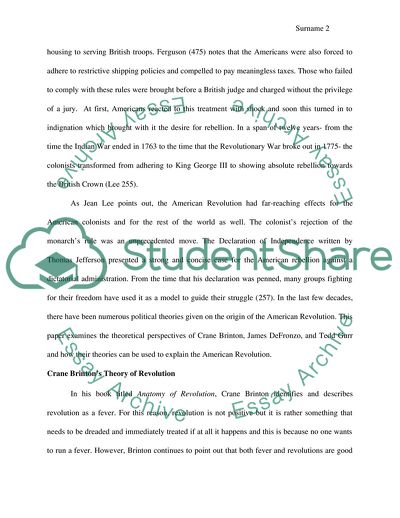Cite this document
(Theoretical Causes of the American Revolution Literature review Example | Topics and Well Written Essays - 2500 words - 1, n.d.)
Theoretical Causes of the American Revolution Literature review Example | Topics and Well Written Essays - 2500 words - 1. https://studentshare.org/history/1813961-the-american-revolution
Theoretical Causes of the American Revolution Literature review Example | Topics and Well Written Essays - 2500 words - 1. https://studentshare.org/history/1813961-the-american-revolution
(Theoretical Causes of the American Revolution Literature Review Example | Topics and Well Written Essays - 2500 Words - 1)
Theoretical Causes of the American Revolution Literature Review Example | Topics and Well Written Essays - 2500 Words - 1. https://studentshare.org/history/1813961-the-american-revolution.
Theoretical Causes of the American Revolution Literature Review Example | Topics and Well Written Essays - 2500 Words - 1. https://studentshare.org/history/1813961-the-american-revolution.
“Theoretical Causes of the American Revolution Literature Review Example | Topics and Well Written Essays - 2500 Words - 1”. https://studentshare.org/history/1813961-the-american-revolution.


